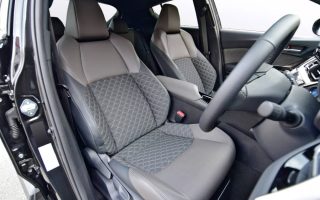Dear ladies, we have noticed that many of you don’t know how the car work. You use the vehicles every day but still can explain the magic of how they move. Some of you would ask “Why do I need to know?”.
Well, we don’t promise that this knowledge will make you a better driver, but at least will help you to understand what is the reason behind some of the most basic car problems.
To create this article we decided to give answers to the most common questions about how a car work. Are you ready to find what is behind the magic? We are ready too.
How does the engine work
You’ve probably heard that the vehicle has an engine. But what is its role? The internal combustion engine is known as the heart of the car. Its main role is to burn fuel creates heat into energy to make the wheels turn.
The heat turns the liquid fuel into vapour and the vapour fills a sealed cylinder. As it burns, the vapour causes an increase in pressure in the cylinder, forcing it down on a piston inside it.
That movement pushes down on another connecting rod and this pushes open a valve allowing exhaust gasses to escape – but only after they have pushed through another identical cycle of compression, ignition and expansion.
How does the braking system work
The brakes are the last part of your car’s safety system to engage when you’re in an emergency. They stop the vehicle by reducing the speed at which your wheels rotate. The brakes are usually applied by a foot pedal or a hand lever, and the pedal will usually push down on the brake pads which press against the brake disc.
There are two types of breaks disc type and drum type. There are two types of the breaks disc type or drum type. Disc brakes are found on the front wheels of most vehicles. Drum brakes are usually located in the rear.
Disc brakes work by the calliper squeezing the brake pads against the brake rotor. This action creates friction, which in turn slows down the wheel. Drum brakes work in a similar way, but the calliper presses against the brake shoes, which push out against the interior of the drum.
You might wonder which breaks are more functional. Both disc and drum brakes are effective at slowing down or stopping a vehicle. However, disc brakes tend to be more efficient and have less brake fade than drum brakes. Disc brakes are also less likely to overheat, making them ideal for use in high-performance vehicles.
There is something more that you should know about the brake system. There may be anti-lock brakes (ABS) fitted as well. These allow you to steer and brake simultaneously and prevent wheel skidding but they won’t work if they’re not connected up properly.
What is a car clutch – how does it work
How many times you’ve been told to be careful with the clutch? Have you wondered what is the role of this super-sensitive thing and why you have to be so careful? Here is the answer.
The clutch is a device that connects the engine to the gearbox and is used to disengage them. When the car is stationary and in neutral, the clutch pedal can be depressed to engage the engine and transmission. This allows you to make changes in drive speed without having to stop, or by shifting gears without having to use the footbrake while accelerating.
The clutch is typically assembled from parts consisting of a flywheel, pressure plate and driven plate. Do you understand now why is so sensitive?
How does the manual gearbox work
The gearbox is the second stage in the transmission system, after the clutch. You might think “What is transmission? You haven’t mention it so far.” Here is the answer.
The transmission is what transfers power from the engine to the drive wheels. It is a synchro-mesh gear box, in which power from the crankshaft is transmitted by one or more chains to a differential that splits it equally to both drive wheels.
Let’t get back to the gearbox. It typically contains a set of gears that the transmission system uses to increase or decrease the speed of the vehicle. The gearbox is an essential component of the transmission system, as it helps to ensure that the vehicle’s engine is operating at the correct speed for the current conditions.
The gearbox is responsible for the car’s ability to change gears, which allows the car to accelerate or decelerate as needed.
Do you see your car with different eyes? We guess this knowledge was very useful for you and the way you understand your vehicle. You might be disappointed there is no magic behind but a lot of engineering, mechanic and creativity.

My name is Rebecca McCarthy and I am an American girl with British heritage residing in the beautiful city of Nashville, Tennessee. I have always had a keen interest in cars, particularly brand new ones that showcase the latest technology and design features. I am also passionate about travelling and experiencing new cultures, as well as enjoying hot summer days with friends and family.



